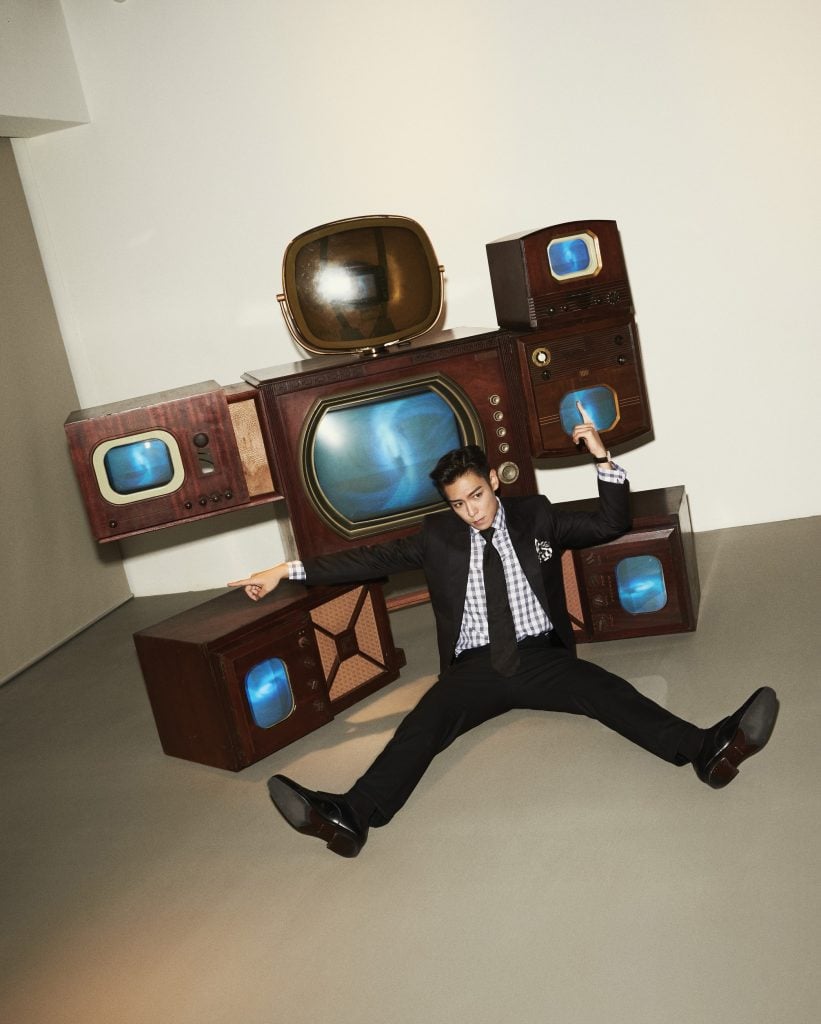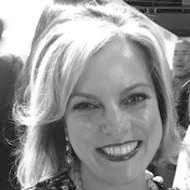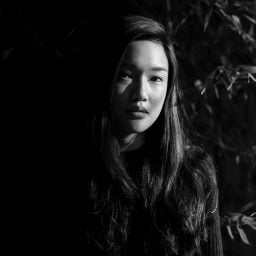Korean pop star Choi Seung-hyun couldn’t wait to go to Los Angeles. It had been five years since he traveled outside Korea, first due to his mandatory military service and then because of the global pandemic. There was music business to discuss, friends to see—and new art to buy.
Spending July in Studio City, a historically working-class neighborhood near Hollywood, Choi kept a low profile, avoiding Koreatown and posting nothing on Instagram, where he has 12.1 million followers. Behind the scenes, however, he kept busy, attending back-to-back meetings and conducting a late-night recording session with the Grammy award-winning producer Scott Storch.
Choi arranged studio visits with artists Mark Grotjahn, Jonas Wood, and Jennifer Guidi and shared a dinner of grilled steak, shrimp, and tequila in the backyard of ceramicist Grant Levy-Lucero. He got a private tour of the Marciano Art Foundation, which has been closed since late 2019, and discovered the work of emerging artists Canyon Castator and Austyn Weiner.
“It’s been a really meaningful trip,” Choi, 33, said in a recent FaceTime interview. He spoke in Korean through a translator but occasionally dropped English phrases such as “real collector,” “top secret,” and “contemporary art.” His voice sounded so deep it seemed to emanate from the center of the Earth.
Choi has been at the forefront of a major shift in the art market, as Asia’s appetite for contemporary fare ballooned over the past five years. A member of the wildly popular BIGBANG boy band who is known to millions of fans as T.O.P, he has inspired a new generation of art buyers by embracing social media to discover and promote artists.
“He was a big catalyst,” said Yuki Terase, who asked Choi to curate Sotheby’s groundbreaking auction of Western contemporary art in Hong Kong in 2016. “The whole celebrity-art phenomenon, which you see a lot in Asia these days, started at that auction. Collecting used to be very discreet and personal. Now art is part of [collectors’] social statement of success and taste.”
Asia accounted for 39 percent of Christie’s $3.5 billion total sales in the first half of 2021, surpassing all other regions, including the U.S., according to the auction house. Sales in Hong Kong totaled $495 million, up 40 percent from a year ago. Contemporary art sales at Sotheby’s Asia have more than doubled since 2016, to $215 million last year. A quarter of the bidders in Hong Kong this past April, when the house held its major spring sales, were under 40.
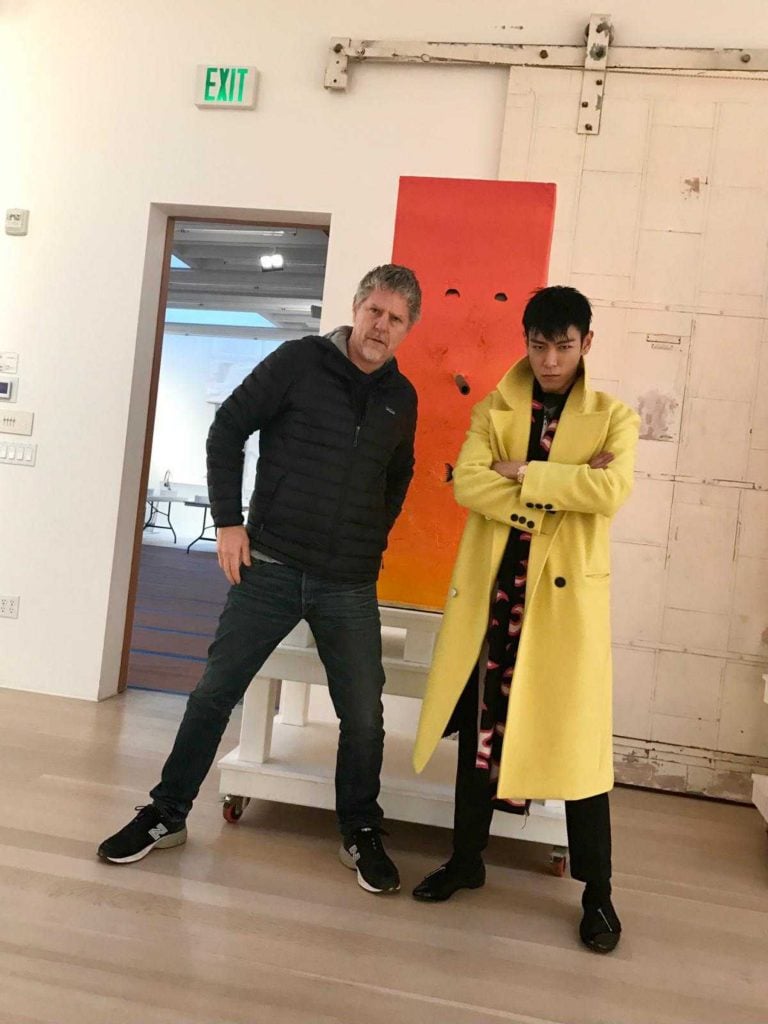
T.O.P with Mark Grotjahn. Courtesy of T.O.P.
Like Choi, many new Asian art buyers are self-made millionaires interested in both Western and Asian art. They are keenly aware of global trends, bidding up prices for works by Matthew Wong, Amoako Boafo, Dana Schutz, and Joel Mesler. Choi is friends with many of the artists he collects, commissioning Murakami to paint his portrait, regularly direct messaging with Grotjahn and Wood, and posting gifts from artists on his Instagram feed.
Choi grew up in a family of artists and art educators. His maternal great-grandfather was Kim Whan-ki (1913–74), a key postwar artist in Korea, whose abstract paintings have sold for as much as $13 million at auction. Growing up around these relatives was an inspiration, he said. It also provided solace.
“I was depressed as a child, feeling this darkness and anxiety,” Choi recalled. His great-grandfather’s paintings “really settled me, helped me focus.”
The experience also set a high bar for excellence. One of his three aunts ran an art school where Choi was “forced” to learn drawing and painting for three to four hours a day after his elementary school classes ended. The experience was “traumatic,” he said, because he realized he would never live up to his own expectations.
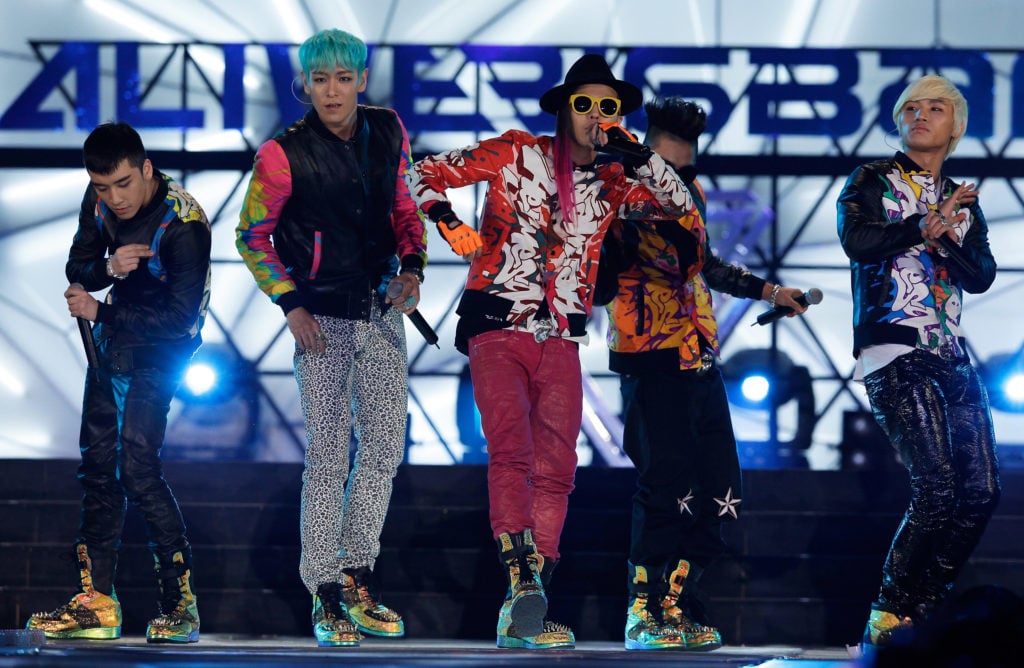
T.O.P performing with Big Band in 2012 in Seoul. Courtesy of photographer Chung Sung-Jun/Getty Images.
By the time he was eight years old, Choi had discovered his true calling as a rapper after hearing a CD by American hip-hop duo Eric B. & Rakim. “I immediately felt this is what I need to do with my life,” he said. He began writing lyrics and music—and asked his mother to buy him sneakers that were popular with rappers in New York and Philadelphia. Over the years, he amassed 100 pairs, including Air Jordans and Nike Air Force 1s (similar shoes have recently fetched hundreds of thousands of dollars at auction).
Art collecting developed naturally. At 19, Choi adopted the stage name T.O.P (an acronym for “The Original Pimp”) and was featured on BIGBANG’s debut album. It was 2006, and he used the money he earned to buy four large paintings by an emerging artist known as KAWS. Each cost $7,000, he recalled.
“I was young,” Choi said with a laugh in English. He subsequently realized he didn’t really like the work and never bought KAWS again.
A decade later, Choi’s prolific Instagram presence caught the eye of Terase, then a young Sotheby’s business-getter in Asia, who came to international prominence while bidding at auction on behalf of Japanese mega-collector Yusaku Maezawa.
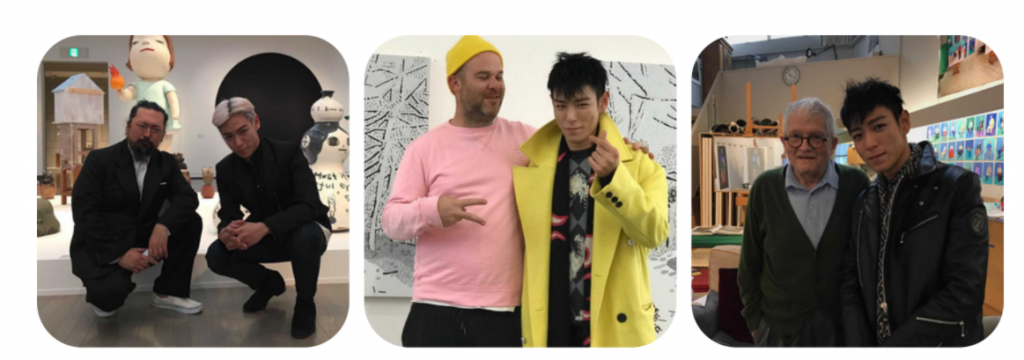
T.O.P visits with artists Takashi Murakami, Jonas Wood, and David Hockney. Courtesy of T.O.P.
“At the time, he was posting daily what he sees, likes, and collects,” Terase said of Choi. “It was very refreshing. He was different from other pop icons, who were focused on their music and events.”
Choi’s Instagram obsession was partly dictated by necessity. One of Korea’s biggest pop stars, he drew mobs wherever he went and so he avoided public spaces as much as possible. As his friend, actor Sean Dulake, who accompanied Choi to Los Angeles and translated for us during the interview, explained: “He can’t go to galleries
and museums, especially in Asia, because he gets recognized. So he has to do it on his phone or a computer.”
Dulake added, “You can pretty much always find him studying art on the internet, on Instagram, communicating with artists, trying to find new artists. He is always searching.”
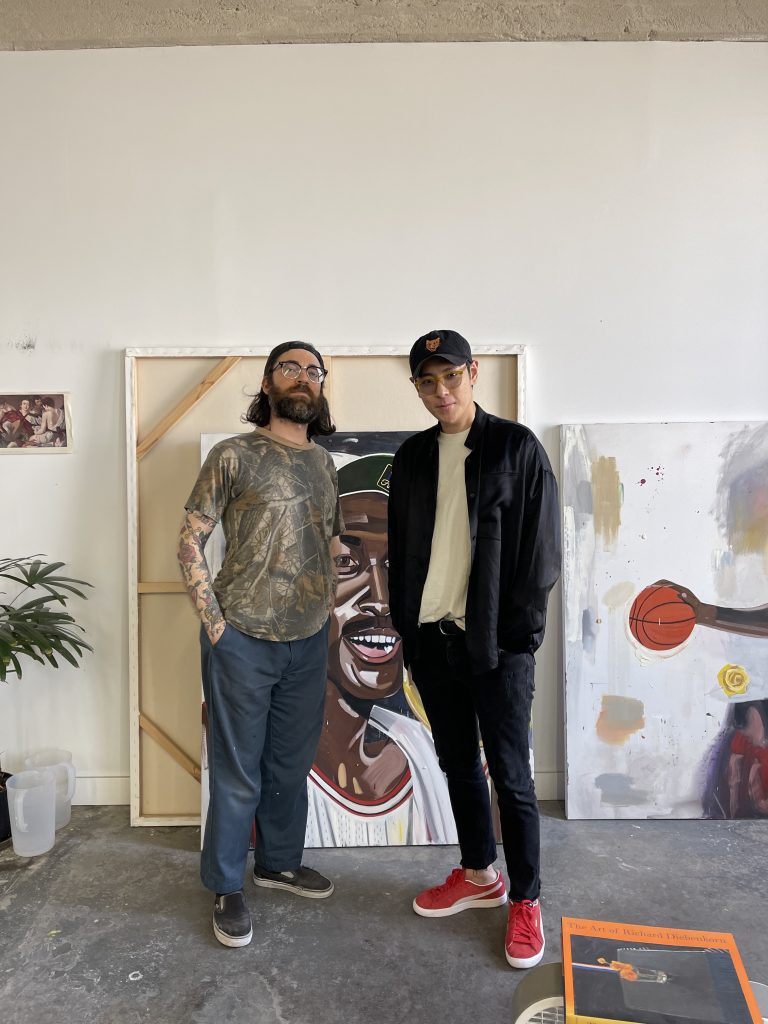
Artist Anthony Rianda and K-pop star T.O.P during a recent studio visit. Courtesy of Niels Kantor.
When Choi does go out, he tries not to attract attention. “No one told me he was a K-pop star, and I wouldn’t have known,” said Canyon Castator, whose studio in downtown Los Angeles Choi visited on his trip. “There was no entourage. He seemed like a very kind guy. He definitely knows what he likes.” (Castator recalled that, drawn to a 10-foot-tall diptych of a young man riding a mechanical bull, Choi asked: “Can I buy this one right now?”)
Even five years ago, Terase sensed that Choi was at the vanguard of a new trend. Asian collectors were already making a dent in the blue-chip art market, snapping up works by Van Gogh, Picasso, and Monet. In Choi, she saw the arrival of the next generation.
“It was like a prophecy of what this market is heading toward,” she said. “I approached him. We became friends. And in 2016 we had the #TTTOP sale.”
Putting the auction together wasn’t easy, primarily because a lot of people weren’t sold on the idea that Asian collectors would go for cutting-edge contemporary, as opposed to historic, Western art.
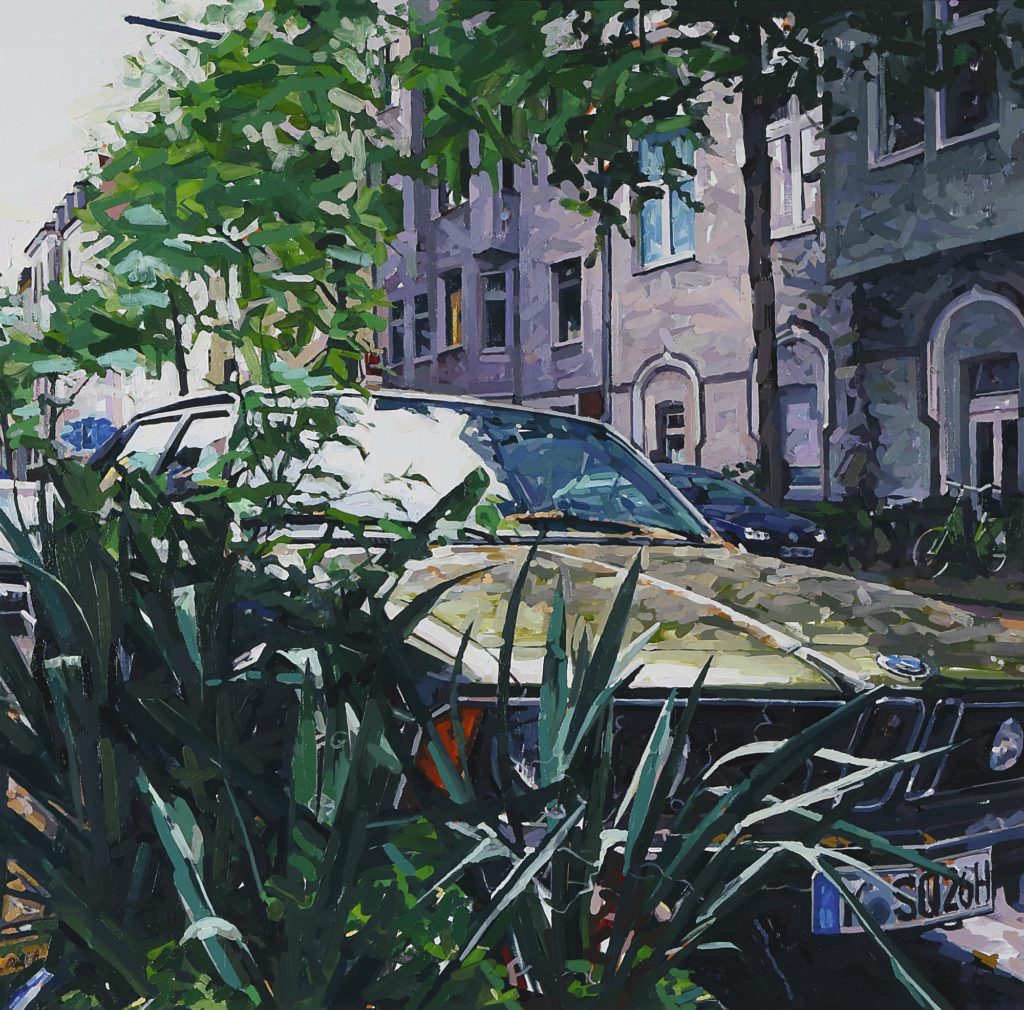
Naoki Tomita, View (T.O.P.). The painting went for $29,000 at Sotheby’s Hong Kong’s “#TTOP” sale. Courtesy of Sotheby’s Hong Kong.
“They said no one in the West would pay attention,” Terase recalled. She asked Choi for a list of artists he’d like to include (Sotheby’s also made suggestions, which he approved).
The final lineup included Korean artists Lee Ufan, Nam June Paik, and Choi’s great-grandfather Kim Whan-ki; blue-chip Western names such as Andy Warhol and Gerhard Richter; and many artists of the moment, including Rudolf Stingel, Jeff Elrod, George Condo, and Jonas Wood—whose markets also happened to be just about to take off.
The sale totaled $17.4 million, surpassing the high estimate, setting multiple artist records, and paving the way for a new type of celebrity-curated auction. A testament to the market’s growth, a recent sale curated by Taiwanese singer Jay Chou brought in a whopping $108 million.
“When we did a preview for T.O.P in Korea and Hong Kong, we saw a lot of high school students in uniforms—they may not have the money to collect art, but they learn through their idol,” Terase said. “You’d be surprised how much his fans know about Jonas Wood and Mark Grotjahn.”
I had a chance to experience the T.O.P effect firsthand in May when I tweeted that Terase was leaving Sotheby’s and mentioned that the K-pop star was her client. His fans discovered my tweet, unleashing a tsunami of shares, likes, and comments. I gained hundreds of followers. Comments like “T.O.P where are you?” “We love you” “Drop your album or I will cry” were mixed with GIFs of a long-necked wooly creature (it turns out the only account Choi follows on Instagram is that of an Italian alpaca-breeding farm).
The fan base remains dedicated despite Choi’s absence from the public eye. His two-year mandatory military service, which began shortly after the Sotheby’s auction, was extended because of a conviction for smoking marijuana. Then the pandemic hit. California’s Coachella Valley Music and Arts Festival in 2020 was canceled, derailing BIGBANG’S anticipated comeback performance. Choi said he’s been busy making music in the studio and has big plans on the horizon but declined to elaborate.
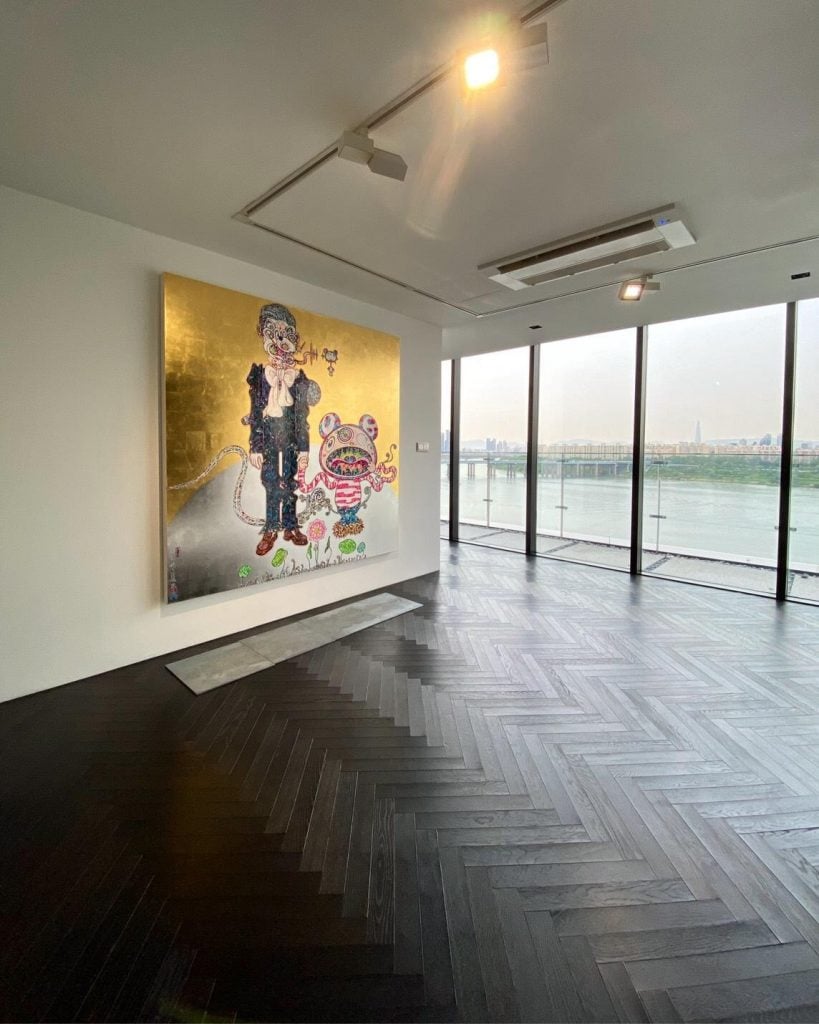
A painting by Takashi Murakami, commissioned by T.O.P.
Choi’s art collection now includes more than 200 paintings and 40 sculptures. He owns works by Richter, Warhol, and Lucio Fontana. A Grotjahn sculpture stands guard on a pedestal by a large window in his condo in Seoul. There’s a portrait of Choi by Murakami on another wall. He corresponded with and bought works by the late Matthew Wong before Wong died by suicide in 2019. Mesler is another artist whose work he’d been acquiring long before the current spike in demand. Looking ahead, Choi has his eye on one particular Basquiat (he won’t say which) and also covets Piet Mondrian and French painter Henri Rousseau.
And Picasso?
“Of course I want,” Choi said in English, his voice crackling with desire.
He stores most of the art in a warehouse next to his condo; some of it also hangs in his parents’ house. At some point in the future, he’d like to open a museum “for the Korean public to enjoy.”
“I want to build it before I become a grandfather,” Choi said.
He has distinguished himself from peers who have built private museums early in their collecting careers to gain clout and access to sought-after work. A lot of people, he thinks, buy art for the wrong reasons.
“It’s trendy and they want to show off,” he said. “It has to do with economics. People with wealth are trying to invest their money. Real estate is an option, but that market has changed. There’s been a lot of fluctuation with other markets. So younger people have been focusing on art.”
Collecting means something entirely different to him: it’s an addiction, inspiration, and antidote to the anxiety and depression with which he still struggles.
“There are tons and tons of collectors everywhere,” Choi said. “The ratio of real collectors to everyone else is one to 100. Real collectors are people who really, really love art with emotion and passion.”
A version of this article appeared in the fall 2021 Artnet Intelligence Report, available exclusively to Artnet News Pro members. To read more about the art collectors shaping the future, the tech tools poised to revolutionize the art world, and how much money NFTs are making for auction houses, download the full report here.
